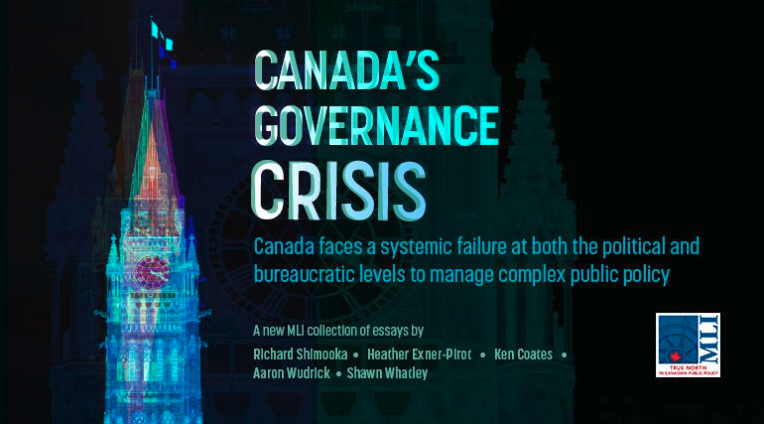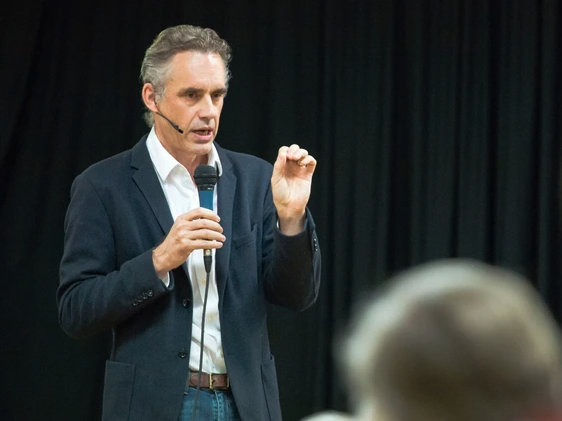
Healthcare is a sector, not a system. It is a sector of the economy comprised of many industries: biotech, pharma, facilities, and so on.
Canada has three separate governance bodies, with overlapping jurisdictions: federal, provincial, and local. Each body looks, acts, and thinks in its own way. Each has its own goals, authority, and risk profile.
Canada has three cooks in the kitchen. What could go wrong?
I wrote this essay for Canada’s Governance Crisis, published by the Macdonald-Laurier Institute. Check out the original on the MLI website to see references and check out all the other essays.
Canada is a country of perpetual pilot projects.
– Monique Bégin, Laura Eggertson, and Noni Macdonald (2009).
Going back to 1975 Canada has struggled with an “addiction to pilot projects.” Provincial governments remain leery of expanding pilot projects into permanent programs. Pilot projects can be cancelled without political outcry whereas cutting permanent programs when budget priorities change invites backlash. Provincial governments resist turning pilots into programs, because they worry about losing control of spending, services, scope, and scale.
Provinces would rather risk being accused of poor performance than taking on a new commitment that they cannot govern. This approach is evident with health care performance. The 2021 Commonwealth Fund study ranks Canada’s health care system 10th out of 11 top-income countries (Schneider et al. 2021). The Fraser Institute’s Mackenzie Moir and Bacchus Barua (2022) found that Canada ranks first for spending and 28th for the number of physicians per thousand people compared with 30 other universal-access health care systems in the Organization for Economic Co-operation and Development (OECD).
Canada struggles to perform, because governments struggle to maintain control. The “perpetual pilot projects” complaint remains true today. Governments cannot experiment with new health care programs without creating political risk. The 1984 Canada Health Act governs what provinces must do to qualify for federal Canada Health Transfer payments, and solidifies the perpetual-pilot-project deadlock-by-design.
Medicare struggles mainly due to governance failure, not a lack of resources. Governance refers to how groups make decisions, delegate authority, and control operations. Medicare faces similar governance challenges to individual corporations, plus added layers of state influence, special interests, public pressure, and much more.
What follows offers a brief overview of Medicare’s governance complexity. Even this brief review will suggest that we should think differently about federal, provincial, and local input. Instead of thinking of them as linked governance units, perhaps we should think of them as overlapping magisteria” – entirely separate and unique mandates for healthcare.
If the notion of overlapping magisteria fits, it should allow us to move on from unsolvable difference between federal, provincial, and local voices. We could start asking more fundamental questions about purpose: Why does Medicare exist? What is Medicare supposed to accomplish? Armed with agreement on purpose, we could plot a path towards true governance reform.
For our purposes here, “Medicare” refers to the Canadian approach of organizing all publicly funded health care services. Medicare emerged and evolved over the last 75 years and has been shaped by legislation, including (but not limited to) regulatory oversight, legal precedent, labour settlements, and much more.
Overwhelming complexity
Governance addresses decision making. Who gets to decide? Who is in charge? Who or what influences decisions? On the surface, authority for Medicare appears to rest at the provincial level. Provincial legislation provides the ultimate shape of care in each province. However, provincial-level authority has expanded exponentially over the years and now includes control of regulatory bodies, educational colleges, bureaucracies, funding agreements, and partnerships with industry.
However, legislation often matters less than informal influence. A comment made in the media by the minister of health or a suggestion made by civil servants to hospital administrators can create cascades of meetings to prepare for the possible changes the comments imply might be coming.
It gets worse.
The federal government adds its own complexity with promises, pronouncements, and warnings. For example, Prime Minister Justin Trudeau promised a family doctor for every Canadian in 2019 (Ballard 2019). In March 2022, Health Minister Jean-Yves Duclos (2022) announced federal health priorities, essentially dictating performance outcomes to the provinces. In December 2022, Prime Minister Trudeau commented on federal-provincial funding talks and said, “There is no point in putting more money into a broken system” (Major and Barton 2022).
Medicare offers endless opportunities to improve, and almost everyone agrees on the need for change (Lau 2023). But having agreed, no one knows where to start, what to do, or who should take responsibility for the outcome.
A framework to understand health care
Health care governance combines three separate conversations, each vying for prominence.
Stephen Jay Gould, the late American paleontologist, proposed a popular truce between science and religion, which he labelled “Nonoverlapping Magisteria” (Gould 1997). Gould argued that each domain represented a distinct and separate magisterium of instruction and authority. Each one addresses entirely different things, so according to Gould, debate should stop.
Debate never stops in Canadian health care, because it tries to do the opposite. Medicare overlaps three magisteria – federal, provincial, and local – and attempts to govern by trying to satisfy all three. The incoherence between them is a key factor behind the system’s challenges. Each magisterium has its own goals, scope of authority, and individual risk profile.
Goals
The federal government’s goal is to ensure universal health care from coast to coast that is comprehensive (for the most part), portable, publicly administered, and accessible (no user fees or extra-billing).
Provincial goals focus on health policy and programs, funding and oversight. Provinces must fund and ensure delivery of the care they have promised.
Local authorities focus on hospitals, labs, outpatient facilities, care homes, and clinics. Local clinicians aim to provide care, even when they cannot cure. All actual care is provided locally.
Authority
Canada’s Constitution Act seems clear: Section 92 identifies health care as a provincial responsibility. The federal government has no direct authority. The federal government can cajole, heckle, and embarrass the provinces, but its only functional tool is “spending power.”
On the other hand, provincial authority seems vast. Provincial governments or institutions can legislate, regulate, fund, licence, promote, develop, punish, and plan health care. However, provinces lack the ability to implement. Even a majority government remains relatively powerless to fundamentally change clinical behaviour. Fee changes and bonuses might tweak clinical care, but they cannot create fundamental change in delivery.
Local, clinical authority depends on legitimacy and trust. Legitimacy starts with (state) licensure and gains stature from performance guided by evidence and outcomes. Trust flows from the millions of medical services provided each day. At the facility level, administrators are accountable to funders and legislators. At the bedside, clinicians are accountable to patients, regulators, and the facilities in which they work.
Risk
The federal government carries the political risk for health care performance but lacks the authority to manage outcomes, which seems unfair. However, the federal government created its own problem when it chose to fund health care with transfer payments rather than tax-point transfers. The federal government used its “spending power” to bribe the provinces into creating programs they may not have built otherwise. Now, the federal government must carry political risk for something it cannot (fully) manage.
Provinces also carry risk they cannot fully control. Headlines about horrendous patient outcomes always demand a provincial response. Despite efforts to blame outcomes on a lack of federal funding, provinces ultimately pay for care. Voters know this.
Political risk aside, no politician or civil servant gets fired for broken promises or failed performance on health care. Real risk only exists at the local level. Every patient complaint must be investigated, no matter how small or time consuming. Every clinical encounter can result in a lawsuit, loss of licence, or worse. Provincial governments can close or amalgamate facilities, with impacts to clinicians and staff that are irreversible. Because of this, new hospital administrators learn that the first rule in hospital administration is never embarrass the government.
Even our brief review of how goals, authority, and risk differ between federal, provincial, and local demonstrates the fundamental differences between each. They are not just different governance units in a coherent system. They are different domains.
Of course, we could multiply differences beyond those outlined in our discussion of goals, authority, and risk. For example, each magisterium has its own approach and traditions for processing information, creating policy, and adapting to change; each region differs slightly from its neighbour; and provinces face unique challenges within the corporatist-style iron triangle of government, unions, and doctors.
Recovery begins with Purpose
Glenn Tecker, governance consultant, teaches that governance does not start with organizational charts. It starts with purpose: “Form follows function, and function follows purpose.”[1] First decide what we want to do, why we exist. Then decide how to organize.
Dr. David Naylor, physician and former president of the University of Toronto, described Medicare as “private practice, public payment” (Naylor 1986). In his book by the same title, Naylor argued that doctors practised and governments paid, end of story. But that dream was dying even before the book went to print.
Today, some argue that “Medicare in Canada is not an insurance program” in the usual sense. “It is a defined set of services administered and delivered provincially under a national framework and paid for through taxes paid to both provincial and federal governments” (Campbell and Marchildon 2007, 9).
Roy Romanow, former NDP premier of Saskatchewan, goes further. In a piece outlining his experiences in “the Medicare battle,” Romanow warns that “this great, redistributive program we call Medicare may not yet be safe” (Marchildon 2012, 290).
These statements show a fundamental disagreement of purpose. Does Medicare exist to provide patient care, or does it exist to serve a redistributive vision? Is Medicare an insurance program, managed care, or a cog in fiscal federalism?
We must know why Medicare exists, before we can fix its governance.
Medicare started as a nationalized health insurance plan to cover “medically necessary” care. But Tommy Douglas said paying for care was only the “first phase.” In his mind, and as he articulated in a 1979 conference, Medicare always included a second phase: a quest to “fundamentally redesign” medical services and delivery (HealthCoalition 2010).
Form follows function, and function follows purpose. If we follow that rule, we should focus our efforts on finding agreement on why Medicare exists before we debate who is in charge.
Beyond Pilot Projects
Canada will continue to be a country of perpetual pilot projects, if we do not address governance. But we cannot start addressing governance, if we keep thinking of the federal, provincial, and local voices as linked governance units. They are more like overlapping magisteria – distinct domains with differing visions of what they hope to accomplish.
If we can think beyond the linked-governance-units model, we could open space to start addressing true governance reform. We could focus on first principles, starting with purpose: for example, why does Medicare exist? What is it supposed to accomplish?
Canadian healthcare offers enormous opportunity for improvement, and it starts with governance.
[1] Personal correspondence with Glenn Tecker, February 2023.


